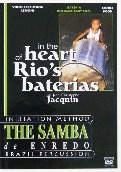Derived largely from the samba, bossa nova is one of the most famous styles of Brazilian music. Literally meaning “new way” or “new fashion,” this influential form was born in middle-class neighborhoods of Rio de Janeiro, especially Copacabana, in the mid-1950s. Three of its primary exponents are guitarist-singer João Gilberto (born 1932); composer, singer, pianist Antônio Carlos (Tom) Jobim (1927-1994); and lyricist Vinícius de Moraes (1913-1980). Other influential bossa artists include Carlos Lyra, Roberto Menescal, Oscar Castro-Neves, Nara Leão, Ronaldo Bôscoli, Marcos Valle, and Baden Powell.
This new sound evolved out of the more sentimental style of samba called samba-canção (song samba), which was popular from the 1930s to the 1950s. But whereas samba-canção typically featured an operatic singing style, bossa nova pioneered the use of a soft, understated vocal delivery as epitomized by the revolutionary João Gilberto, whose voice bears some similarity to that of American cool jazz artist Chet Baker. Gilberto also introduced a novel way of phrasing the samba beat on guitar that took the genre’s traditional structure and turned it upside down with sparse patterns that played around with the rhythm.
Bossa nova compositions embodied the optimism of the Brazilian middle class in the 1950s, with lyrics that poetically reflected on the sun, beach, and beautiful girls. Inspired by the 20th Century classical music of Debussy, Ravel, and Brazilian composer Villa-Lobos, Antônio Carlos Jobim introduced complex harmonies into his songs. Other bossa artists were enamored with American cool jazz, which also made use of sophisticated chord changes.
Some traditionalists have criticized bossa nova for being an internationalized form of Brazilian music. But the style represents the first massive impact of Brazilian music on the global scene and is now largely embraced in Brazil. “Chega de Saudade” (No More Blues) by Jobim and de Morães is widely considered to be the first bossa nova song. It was performed by João Gilberto with arrangements by Jobim and released in 1958. The first bossa nova album of the same name, by Gilberto, appeared the following year.
Also in 1959, the film Orfeu Negro (Black Orpheus) made a huge international impact with a soundtrack that featured compositions by Jobim, de Morães, and guitarist Luiz Bonfá. Bonfá’s “Manhã de Carnaval” and Jobim and de Morães’ “A Felicidade” became worldwide hits. The film won the Grand Prize at the Cannes Film Festival and an Academy Award for Best Foreign Film. Orfeu Negro remains one of the single most important vehicles of all time for the international popularization of Brazilian music.
The worldwide bossa nova craze began in the U.S. with the 1962 hit album Jazz Samba recorded by guitarist Charlie Byrd and saxophonist Stan Getz. The latter recorded another milestone bossa nova record called Getz/Gilberto with João Gilberto and Jobim. Released in 1964, the album features numerous bossa classics, including “The Girl From Ipanema,” one of the most recorded Brazilian songs of all time.
Though it has largely been absorbed into other styles and is not so popular in its original form today, bossa nova was the biggest trend in international pop music of the early 1960s until rock ‘n’ roll took its place. Within the jazz realm, bossa nova has remained an essential influence and has contributed numerous “standards” to the jazz repertoire, many of them penned by Jobim, one of the most renowned composers of the 20th Century.
Watch
Antônio Carlos Jobim & Elis Regina —
"Águas de Março"
João Gilberto JGPPO Grandes Nomes, 1980.
sourceJoão Gilberto
sourceVinícius de Moraes
Vinícius de Moraes & Toquinho — "Tarde em Itapuã"
Baden Powell — "Samba Triste"
sourceBaden Powell
sourceNara Leão
Nara Leão — "Diz Que Fui Por Aí"
Listen
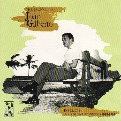
The Legendary
João Gilberto (CD)

Elis & Tom (CD)

Getz/Gilberto (CD)
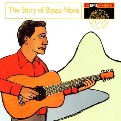
The Story of
Bossa Nova (CD)
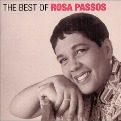
The Best of
Rosa Passos (CD)
Read
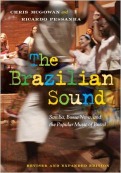
The Brazilian Sound
One of the most comprehensive books on Brazilian popular music in English with an excellent chapter on bossa nova.
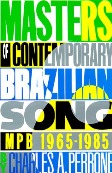
Masters of Contemporary Brazilian Song: MPB 1965-1985
A landmark work on post-bossa-nova popular Brazilian song with a succinct introduction that reviews various influential Brazilian musical trends.
Learn More
For Lifelong Learners
Discussion Ideas
• Have a bossa nova viewing and listening party. Sample traditional Brazilian dishes as you discuss how different performers present the bossa nova sound.
• Share ideas about why bossa nova became the huge international success it did.
For Students
Teaching Ideas
Discuss
• Invite students to listen to the recordings featured above. Discuss what moods and images the music evokes.
Explore
• Have students work in small groups to create a business concept that connects customers to a bossa nova state of mind. For example, if students choose to plan a bossa-nova-themed restaurant, they would need to consider the menu, decor, and background or live music playlist as well as the types of customers the restaurant would attract.
Share
• Invite the student groups to share their business concepts in class. You could invite a local business expert in to hear and comment on the students’ ideas. [Addresses CCSS Writing Standards 4 and 6 and Speaking and Listening Standard 4.]
